Gap Selling: How to Win More Deals With a Problem-Centric Sales Process
Casey O'Connor
Contents
- What is Gap Selling?
- Gap Selling Methodology Benefits
- Gap Selling Questions
- Is Gap Selling Right for Your Team?
- How to Start Gap Selling Today
- Common Mistakes to Avoid in Gap Selling
- Example of Gap Selling
- Gap Selling vs. Common Methodologies
- Gap Selling Resources
- Mastering Gap Selling for Sustainable Sales Growth
- Frequently Asked Questions (FAQs) About Gap Selling
Gap selling is a sales methodology in which salespeople aim to position their product as the solution that “fills the gap” between a prospect’s current state and their desired future state.
The gap selling strategy relies on salespeople asking extremely effective and thought-provoking questions, primarily during the discovery process but also throughout the sales process as a whole. These questions need to be poignant, well-timed, and insightful.
In this article, we’ll go over everything you need to know about gap selling, including the specifics of the methodology, the exact questions you need to ask to determine a prospect’s gap, and how to start gap selling with your team today.
Here’s what we’ll cover:
- What is Gap Selling?
- Gap Selling Methodology Benefits
- Gap Selling Questions
- Is Gap Selling Right for Your Team?
- How to Start Gap Selling Today
- Common Mistakes to Avoid in Gap Selling
- Example of Gap Selling
- Gap Selling vs. Common Methodologies
- Gap Selling Resources
- FAQs
What is Gap Selling?
Gap selling was defined by a sales figure named Keenan, CEO of A Sales Growth Company and author of the best-selling book on the gap selling methodology, Gap Selling: Getting the Customer to Yes.
Gap selling tasks salespeople with identifying three key components of a prospect’s buying scenario:
- Their current state
- Their ideal future state
- The space between where they are now and where they want to be — this is known as “the gap”
The methodology focuses heavily on prospects’ problems and pain points. The emphasis is on the customer, not the sale. It’s distinctly different from strategies in which salespeople put a lot of emphasis on the product itself.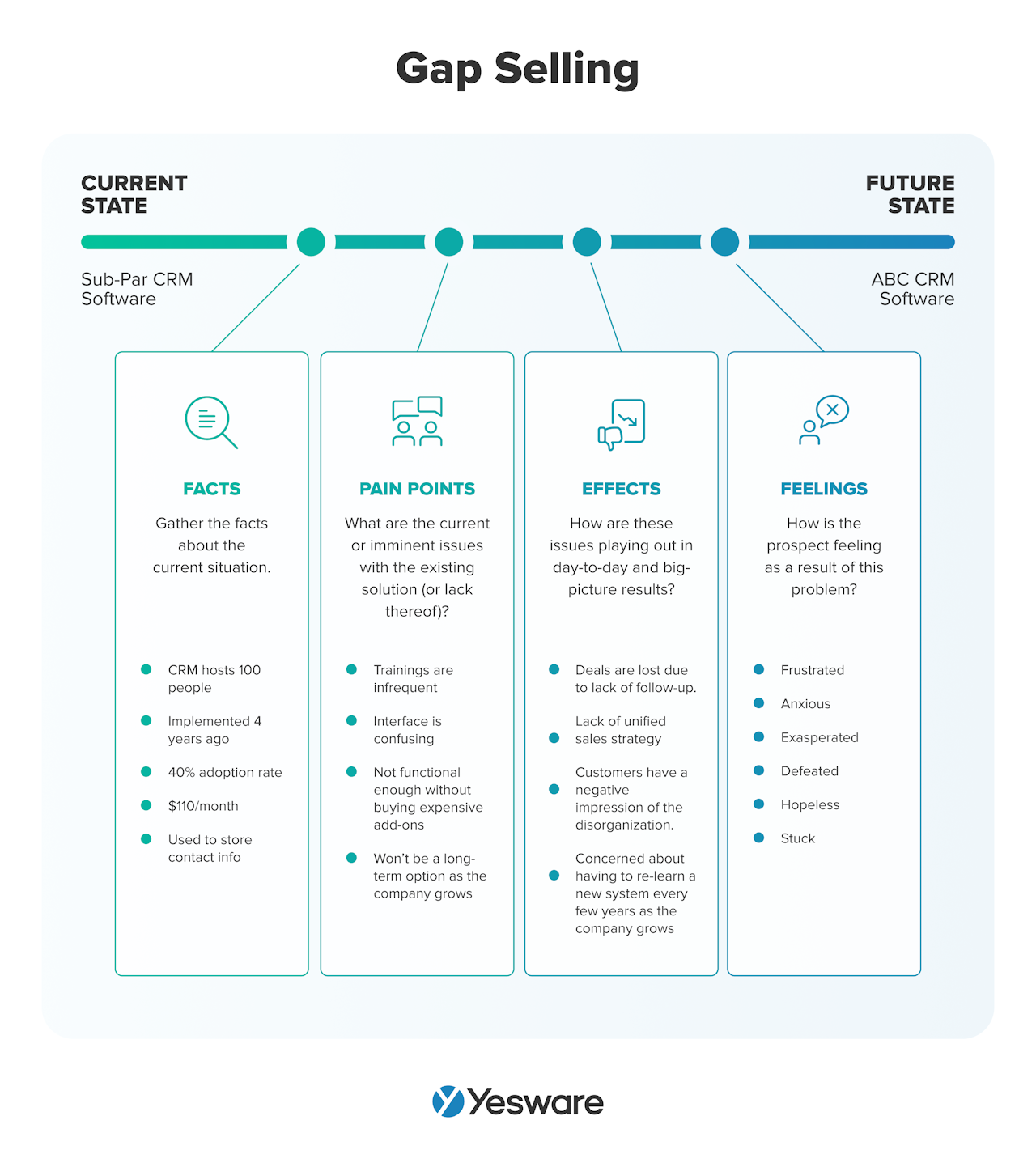 Inside “the gap” is where sales opportunity lives. It’s up to salespeople to identify all that exists within and on either side of that gap.
Inside “the gap” is where sales opportunity lives. It’s up to salespeople to identify all that exists within and on either side of that gap.
Current State
A prospect’s current state outlines their situation as it stands in the present. It describes what issues or challenges they’re facing now, and what impact those issues are having on the organization.
When working to identify the current state, sales reps should ask questions with the goal of understanding the following:
- Environment: Understand their physical and literal working environment. What do they sell? Who is their target market? What stakeholders are involved in this process?
- Problem: What challenges are they facing right now? Is their problem business-based (like low revenue), or a technical one (like inability to log complete data points)?
- Impact: How is this problem affecting the prospect and/or their organization as a whole?
- Root Cause: Why does this problem exist? What’s causing the issue? Are there fundamental issues within the organization that are contributing to this particular problem or pain point?
- Emotion: How does the prospect and/or their organization feel about the problem? Is it having an emotional impact on them?
The more a salesperson understands the prospect’s current state, the better they can position their product as the ideal solution to move them out of it.
Future State
A prospect’s future state is their ideal outcome. It describes what their environment and business processes would look like if their problem were solved.
Salespeople will identify similar components of the future state:
- Environment: What will their environment look like and how will it function when the problem is solved?
- Impact: How will the prospect or business change as a result of having solved the problem?
- Emotion: How will the prospect feel when their challenges no longer exist?
And the goal for salespeople when identifying the future state is to figure out what needs to happen to a prospect and/or their organization in order to get them to their desired future state.
The Gap
“The gap” is where gap selling gets its name, and represents the space between the prospect’s current state and their future one. In that space, according to the gap selling methodology, is where sales are made.
It’s up to salespeople to quantify the gap as specifically as possible. What is this problem costing the prospect already? What specific impacts — in terms of real dollars or real, quantifiable time and/or effort — will a solution have on their business metrics? Identifying the gap means positioning the offer in a way that clearly demonstrates its value, making it as tangible as possible.
The wider the gap between a prospect’s current state and their future state, the more motivated they will be to make a purchase. 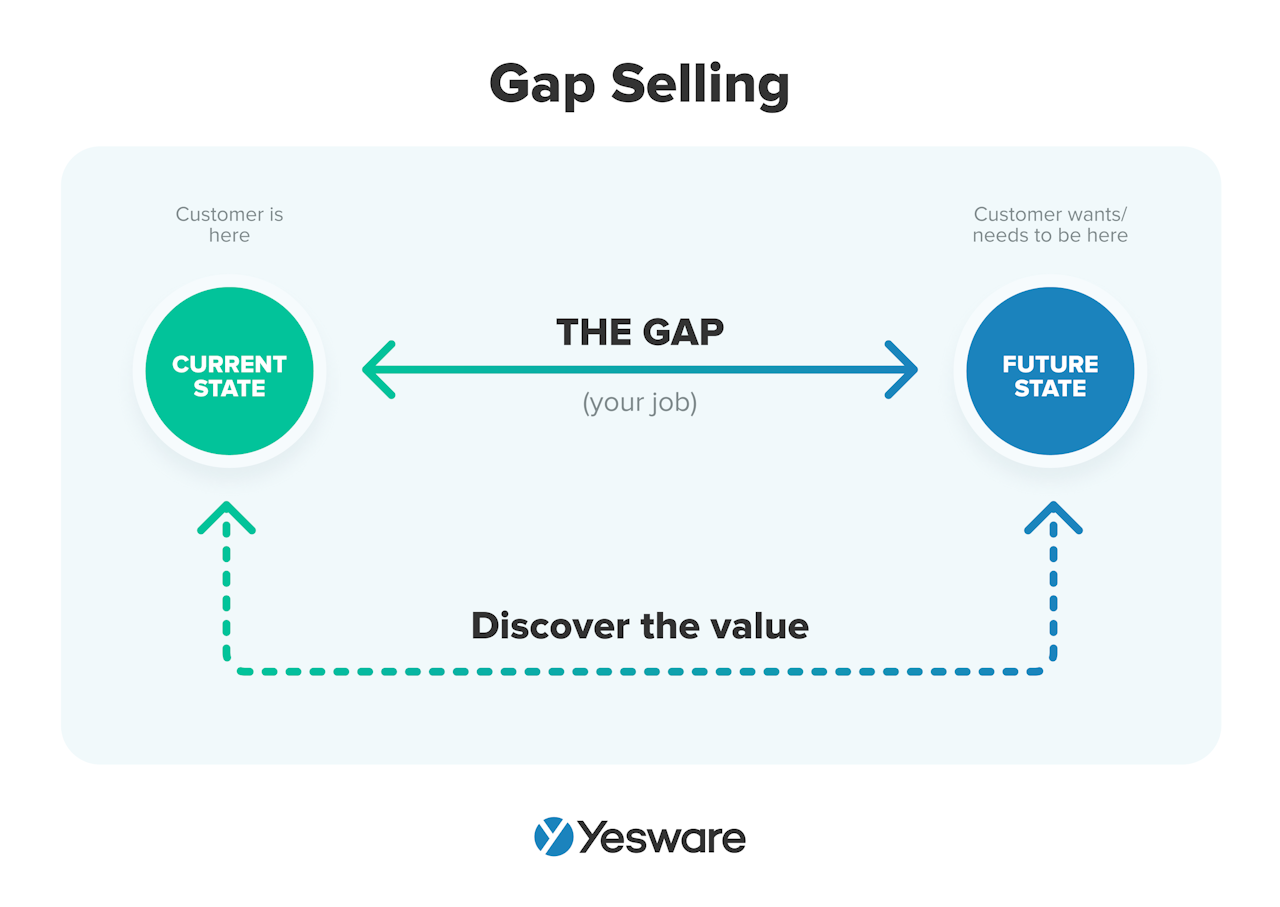 It’s important to note that the gap selling process can take some time to complete. It also requires salespeople to ask extremely effective questions that get to the heart of what prospects really want.
It’s important to note that the gap selling process can take some time to complete. It also requires salespeople to ask extremely effective questions that get to the heart of what prospects really want.
Many prospects enter the sales process under the impression that they have a solid understanding of their own problem, but the reality is that many actually do not.
Instead, prospects may understand that they have a need, but problems and needs are different. When a salesperson helps a prospect define their problem, they can identify the impact their issue has on them and their organization as a whole.
Shedding light on the impact can help create urgency in the purchasing process, and can highlight the value of your particular offer.
Gap Selling Methodology Benefits
To be transparent, gap selling isn’t the right methodology for every sales team. It can be challenging to learn and master. And it also isn’t as effective for retail sales or sales that tend to be more transactional.
It can be, however, a very good fit for B2B businesses that sell solutions to complex problems. Gap selling is particularly effective for sales scenarios that often require a certain level of customization to the offer.
Gap selling can be challenging, but mastering the process is well worth it. The benefits of using the gap selling methodology include better seller/buyer relationships, more satisfied customers, and improved sales metrics.
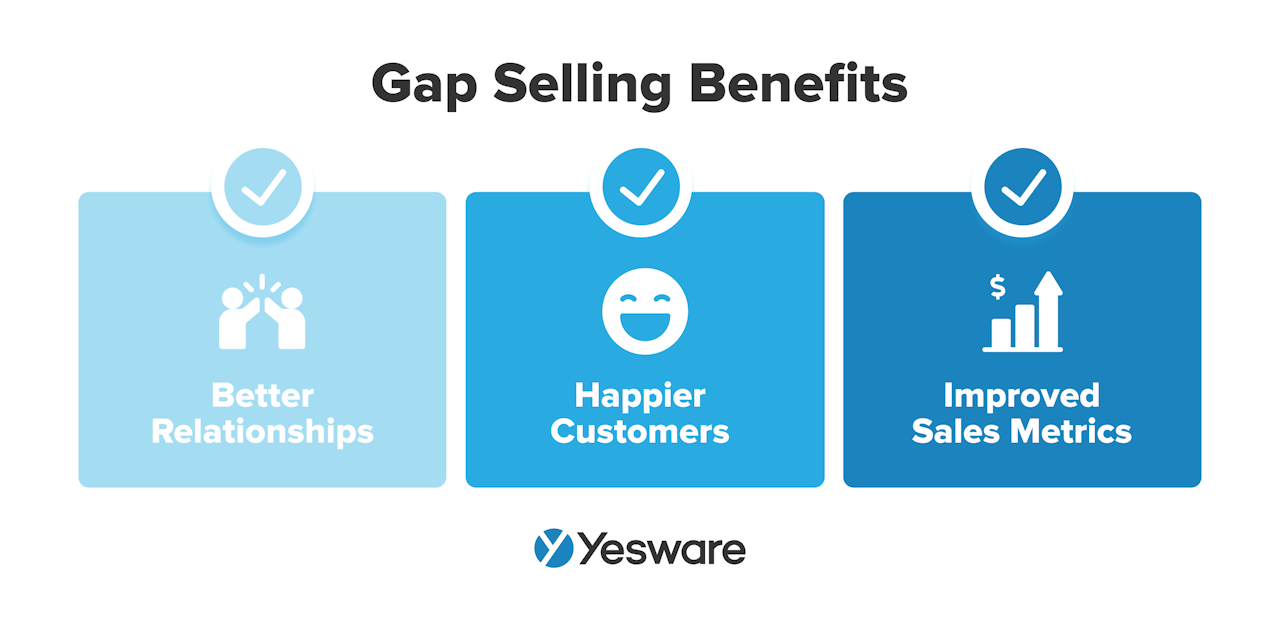
Better Relationships
Gap selling helps salespeople build trust and credibility through the sales process.
By helping prospects identify and define their current and future states, and the gap between them, salespeople position themselves as expert advisors.
Gap selling is based on credibility rather than friendly rapport (though that’s important too!), so sales reps have a good opportunity to position themselves as experts in the industry when they use this methodology.
Happier Customers
Gap selling helps salespeople sell the way buyers buy. It puts the focus on the customer, rather than the product, and it maps closely to the buyer’s journey and decision process that companies undertake internally as they determine when and what solution to buy.
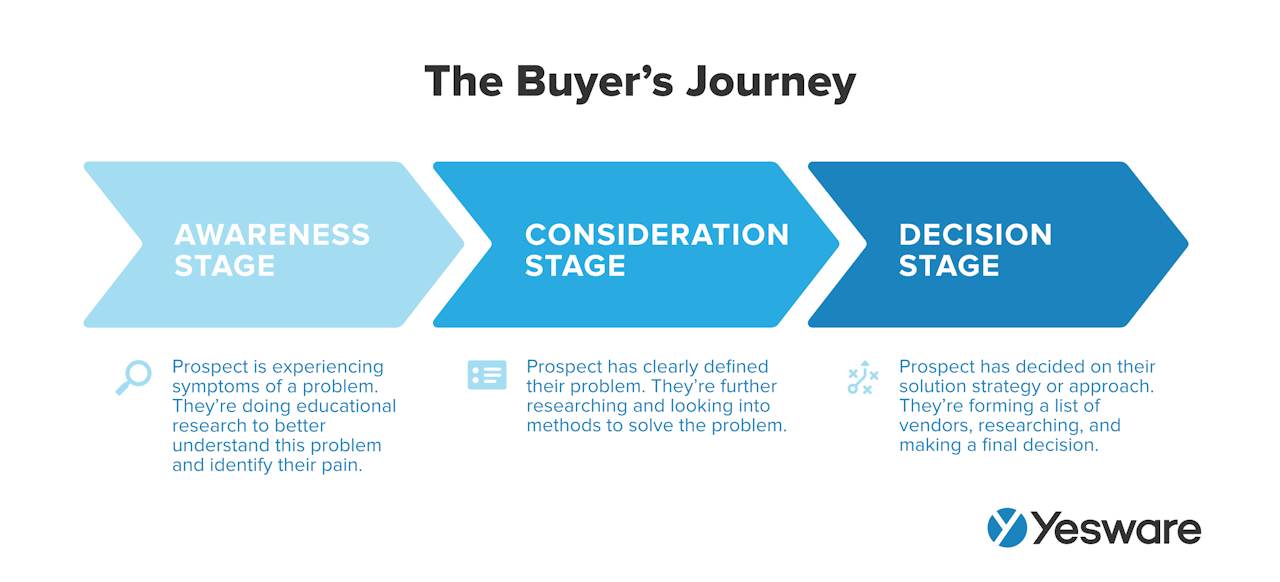
The gap selling sales methodology is about selling the outcome. The process prompts the buyer to look their problem square in the face, and really consider the impact it’s having. It then helps paint the picture of what life could be like if those problems were solved. Framing the buying process this way helps eliminate most sales objections.
At the end of the process, most sales teams find that gap selling generates customers who are extremely satisfied with their solution.
Improved Sales Metrics
Sales teams that use gap selling have reported improvements in many sales metrics and sales KPIs, including:
- Shorter sales cycles
- Higher average selling price
- Increased overall revenue
- Less time wasted on deals that won’t close
- Increased motivation and productivity
- More accurate sales forecasting
Gap Selling Questions
Much of the gap selling process takes place during the discovery phase of the sales process. In fact, according to the gap selling methodology, discovery should account for about 25% of the sales process.
But the gap selling methodology requires more than just run-of-the-mill qualifying questions. There is an art and a science to asking questions in the gap selling framework, and it can take some practice. It can be particularly challenging because these questions can’t be scripted — each question in the gap selling framework should be unique to the prospect and their individual circumstances.
That being said, there are some basic frameworks around question themes and specific wording that will help you identify what you need to know in order to gap sell.
Gap selling questions generally fall under three main categories: probing questions, provoking questions, and validating questions. Each of those question types helps paint the picture of how the seller can fill the buyer’s gap.
Probing Questions
Probing questions are designed to gather information. They’re used to gather as many details as possible about the prospect’s current situation and problems they’re facing.
Probing questions should be open-ended, and sellers should feel free to ask as many follow-up questions as they need to in order to understand the present circumstances fully.
Here are some examples of probing questions:
- You mentioned [pain point or problem]. Can you tell me more about that?
- How is [problem or pain point] impacting your day-to-day work? Have you noticed any wider-reaching effects that impact the organization as a whole?
- What parts of your organization work really well? What parts, in your opinion, need attention or change?
- What are you hoping to achieve with the kind of solution you’re seeking?
- Can you help me understand how your company currently does [process related to your product]?
The more you can get the prospect to share details about their situation using their own words, the better you’ll be able to perfectly position your product to fill the gap.
Provoking Questions
Provoking questions can be some of the most challenging for salespeople to master. They are designed to challenge the way a prospect has previously considered their problem, and encourage them to look at it from a different perspective.
For example — a prospect may understand how the problem affects their personal day-to-day responsibilities, but may not yet see how it affects the entire team or organization. A sales rep can ask a provoking question to help the prospect change their thought process and consider the bigger picture.
You may also need to ask provoking questions to encourage prospects to really sit with their pain and — to an extent — become agitated by it. Prospects won’t be motivated to buy with urgency unless their pain becomes too unbearable.
Here are some examples of effective provoking questions:
- Have you considered what would happen if [hypothetical negative or positive situation]?
- How could this problem potentially affect your team/organization?
- Have you ever considered [insight or idea]?
- How long will the situation, as it stands now, be tenable for you and your team?
Provoking questions are meant to get your prospect to consider the situation at hand in a way they haven’t before. Prospects need to understand the full extent of their problem, and how it impacts the bigger picture, in order to want to follow through with a purchase.
Provoking questions also allow salespeople to position themselves as trusted advisors and experts.
Validating Questions
Validating questions are intended to help salespeople confirm the ideas and facts that the prospect shares with them. They help salespeople paraphrase and mirror back their own understandings so that they and the prospect are completely on the same page.
It’s okay for validating questions to be closed-ended.
Here are some examples of validating questions:
- It sounds like the main issue you’re facing is [problem], do I have that right?
- Last time we talked, your biggest complaint was [problem]. Is that still going on? Has anything else popped up in the meantime?
- Just to confirm, [paraphrase prospect’s talking points].
- I just want to make sure I’m understanding correctly — are you saying [paraphrase what the prospect shared]?
Sales reps should never make assumptions when using the gap selling sales methodology. Both prospect and salesperson need to be on the exact same page about what the issue is, how they would like it to be resolved in an ideal world, and how the offer can fill the space between those two states.
Validating questions help eliminate crossed wires and show the prospect that you listened to their concerns carefully.
Tip: Make sure you’re asking the right questions with the right tone and the right words. Grab some psychology-backed principles below to ensure you’re connecting with prospects and building trust.
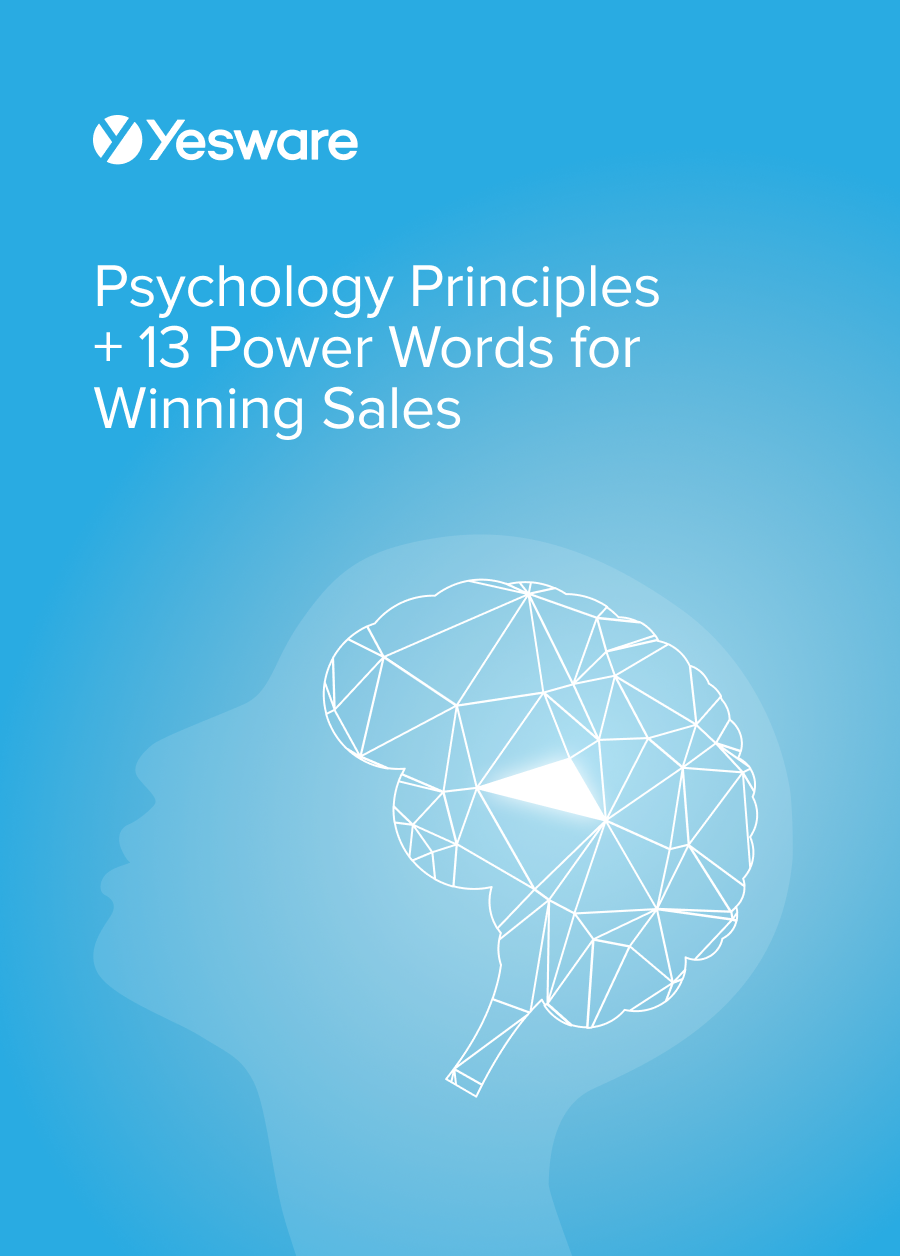 Psychology Principles + 13 Power Words for Winning SalesData-backed psychological principles, nonverbal cues, and persuasive phrases to win more deals.
Psychology Principles + 13 Power Words for Winning SalesData-backed psychological principles, nonverbal cues, and persuasive phrases to win more deals.
Is Gap Selling Right for Your Team?
Although gap selling can be a very effective sales methodology, it’s not necessarily right for every team or sales scenario.
Transactional and retail sales, for example, are a particularly poor fit for a gap selling approach. The typical B2C consumer simply does not have the time for or interest in the long sales cycle that gap selling requires.
Instead, gap selling is a better fit for B2B fields with traditionally longer or otherwise complex sales cycles, especially industries like:
- Commercial insurance
- IT services
- Project management services/software
- Sales automation software
- Payroll/accounting software
Even for companies that represent a good fit for the approach, gap selling can be difficult to master. It typically requires a good amount of training and (ideally) coaching to get it right. But the results can be worth it for teams that fit a certain profile and are willing to monitor and continuously improve their mastery of the method.
How to Start Gap Selling Today
Implementing the gap selling process is both simple and complex at once. It’s relatively straightforward to get the process started, but it can be difficult to master. Gap selling requires dedication, training or sales coaching, and a keen understanding of customer psychology in order to be utilized effectively.
The following steps will help you get started on gap selling today. Remember that this is only a starting point, and the process should be tracked and optimized as time goes on.
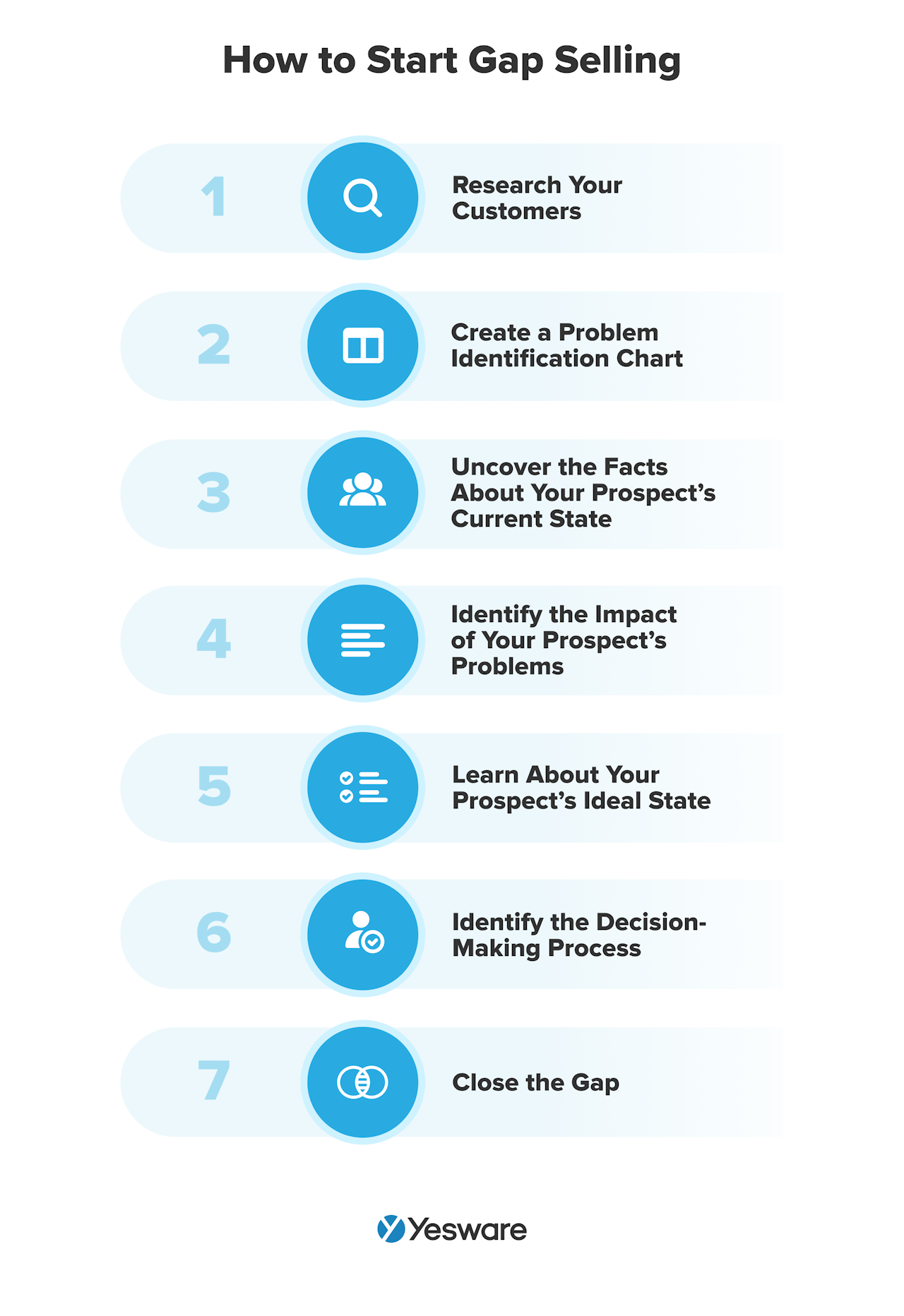 1. Research Your Customers
1. Research Your Customers
Just like any sales methodology, gap selling requires sellers to have a very thorough understanding of their target market. Sales and marketing should work together to create a detailed ideal customer profile (ICP) and buyer personas.
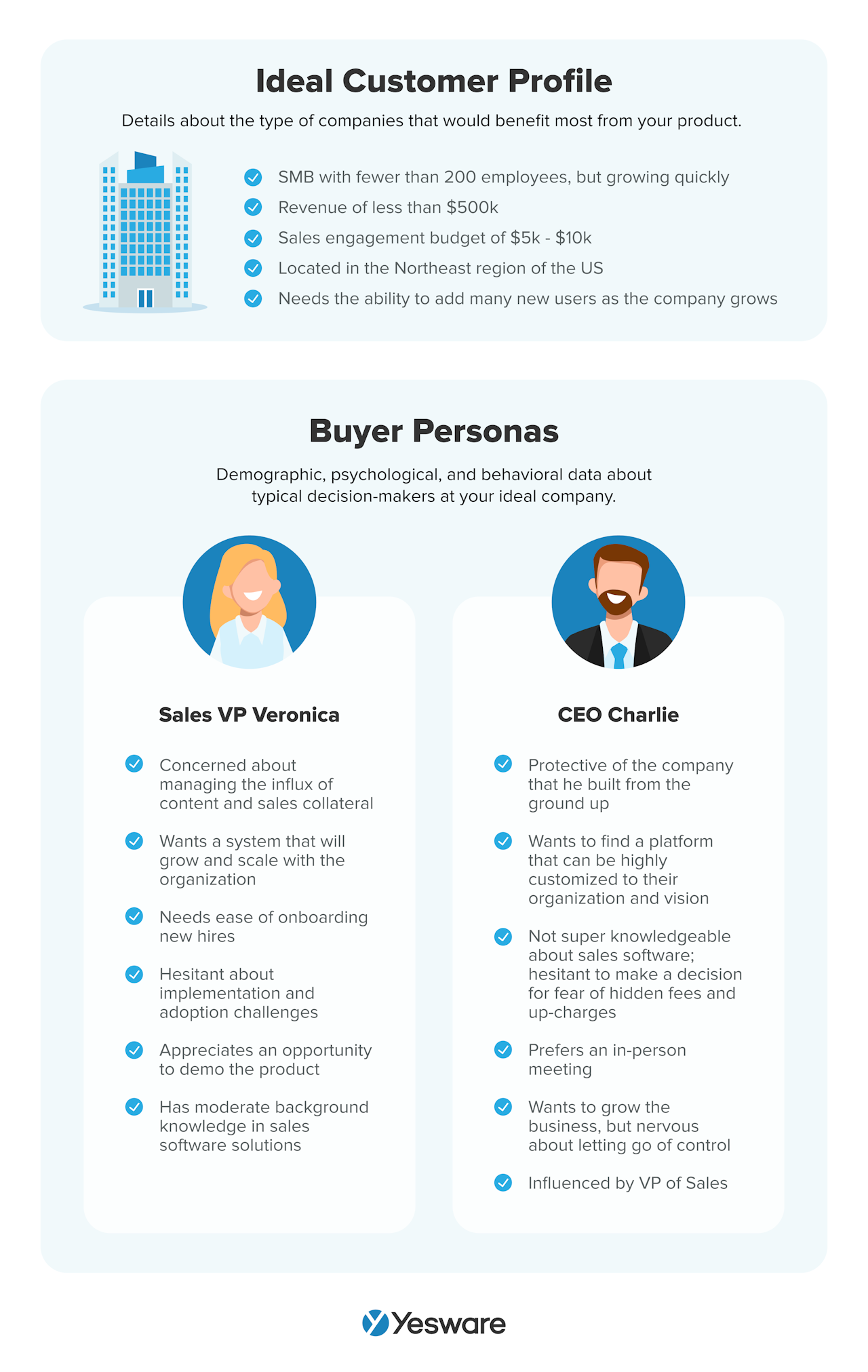
The ICP and buyer personas can act as a framework to guide salespeople as they discover more specifics about individual prospects they encounter in the sales process.
2. Create a Problem Identification Chart
A problem identification chart is a fantastic tool to help sellers with gap selling. The chart outlines the various problems that your product can solve, including the impacts of those problems and their root causes, if known.
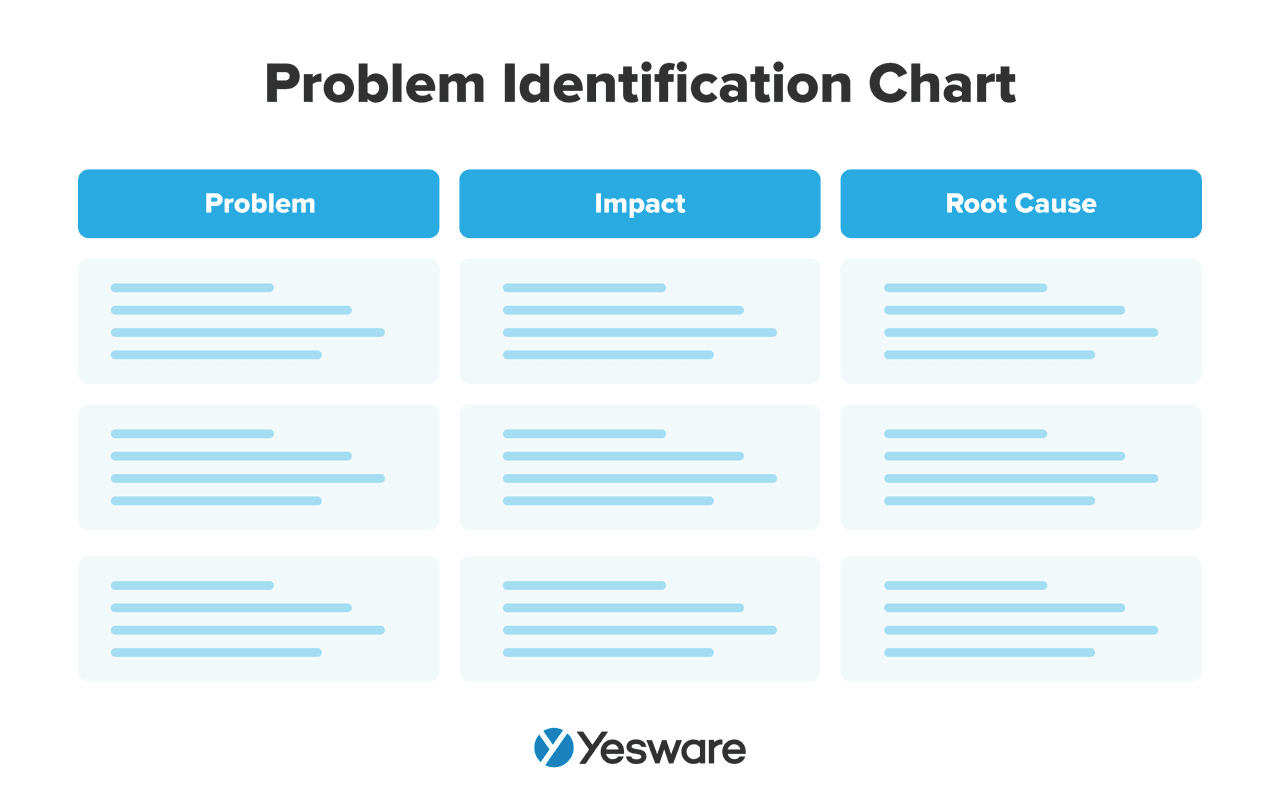
Salespeople can also feel free to add additional columns to this chart. Some sales reps, for example, might add a fourth column for notes, where they can add what they already know about specific problems based on successful customers they’ve served in the past.
Here’s an example provided by gap selling founder himself, Keenan:
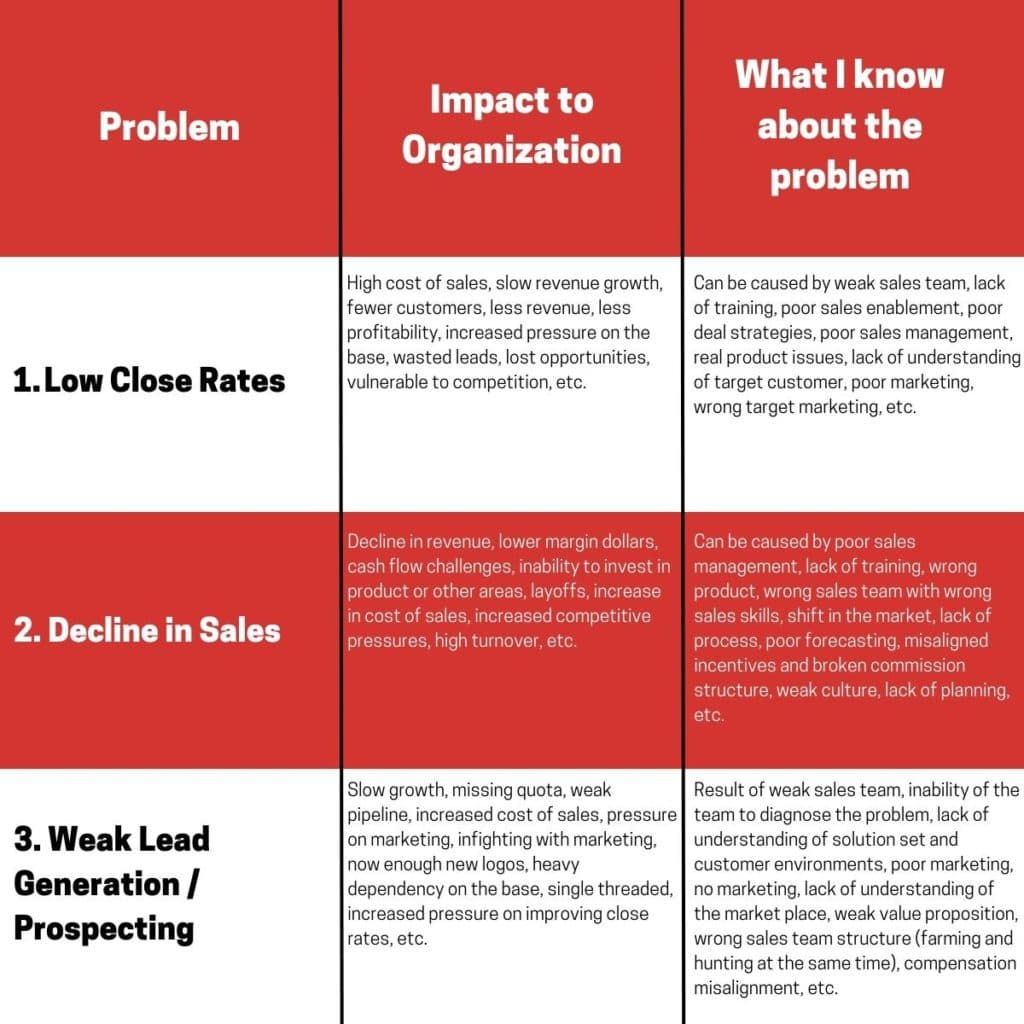
The problem identification chart should be created before sales reps reach out to prospects.
3. Uncover the Facts About Your Prospect’s Current State
The next step in the gap selling process comes when you meet with a specific prospect.
During this stage, the sales rep’s job is to collect as much information as they can about the prospect’s current situation. How does their business operate? What problems or challenges are they facing? How are they attempting to address those challenges currently?
This is not the time to mention your product; doing so will make you seem pushy. Instead, this phase is all about the prospect and their problem.
4. Identify the Impact of Your Prospect’s Problems
Once you have the literal and physical layout of how the prospect’s business is currently functioning (or, more likely, dis-functioning), you need to dig deeper.
Ask probing and provoking questions to get the prospect to identify what kind of impact the problem is having on their own work and the success of their organization. Is the problem affecting the bottom line? What other consequences have they faced so far as a result of the problem?
You’ll also want to attempt to get to the root cause of the issues. Part of this work should be done when you create your problem identification chart, but it’s best if you can get the prospect to do some of this work, too. The more you can get the prospect to share in their own words, the better.
5. Learn About Your Prospect’s Ideal State
At this point, the “hard” parts are more or less out of the way — at least for the prospect. Most buyers are eager to talk about how they want things to look once they’ve solved their problem.
Be sure to ask about the emotions behind their ideal, as much as the logistics. Why is finding this kind of solution so important to them? How would it make them feel? The language they use to respond to these kinds of questions will help sales reps shape their gap-filling solution when it comes time to present it.
6. Identify the Decision-Making Process
Before you present your solution, it’s important that you have a thorough understanding of how the buying decision will ultimately be made. What criteria is the buying team prioritizing? How will the process unfold? Who will need to sign off on the purchase?
Validating questions are particularly useful in this step. Sales reps will need to ensure they understand all the various steps and players in the decision process so that they can address them as they frame and present their solution.
7. Close the Gap
Once you’ve painted a complete picture of the prospect, their needs, and their ideal outcome, you have everything you need to frame your solution as the best option.
It’s important to stick to only a few features when you’re giving the pitch that closes the gap. Your product may do many things wonderfully, but they won’t all be applicable to each and every prospect. Stick to a small handful of features — six at the most — that are most likely to resonate with the prospect’s needs and desires.
It’s also important that when you’re closing the gap, speak in terms of business solutions, not technical ones. Your CRM may very well log data points in milliseconds, but how will that impact the company overall? Sales reps may spend less time prospecting and sifting through data, making more time for selling and closing deals.
Highlight the outcomes, not the technical solutions.
It will likely take several prospect meetings and discovery conversations before this process feels comfortable and fluid for sales reps who are new to gap selling.
One of the best pieces of advice for sellers new to gap selling is to listen more than they talk. Top closers spend more time listening than talking, while bottom closers do the opposite.
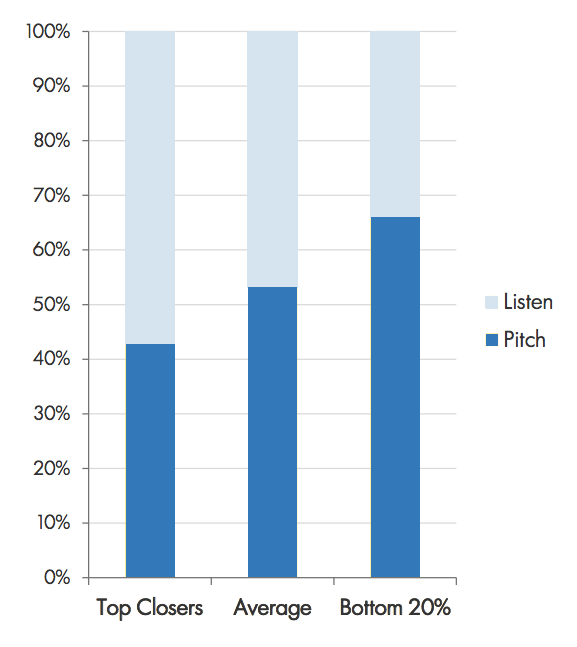
Most of the sales reps words should come in the form of questions or paraphrasing information shared by the prospect.
Common Mistakes to Avoid in Gap Selling
Even with the best intentions, it’s easy to fall into common traps when implementing gap selling. Avoiding these pitfalls will significantly increase your success rate and ensure you genuinely help your prospects.
1. Focusing on Your Product Too Early
- The Mistake: Jumping straight into product features and benefits before fully understanding the customer’s current state and desired future.
- Why it’s a mistake: You become a “product pusher” instead of a problem solver. You don’t know which features are relevant, and the customer hasn’t yet felt the urgency of their “gap.”
- How to avoid it: Prioritize discovery. Spend 80% of your initial conversation asking questions about their current situation and desired outcomes. Resist the urge to talk about your solution until the gap is clear and quantified.
2. Insufficient Discovery of the Current State
- The Mistake: Asking only surface-level questions about the customer’s current challenges, leading to an incomplete understanding of their pain.
- Why it’s a mistake: If you don’t fully grasp their “as-is,” you can’t effectively highlight the problems, their impacts, or the root causes. This results in a weak “gap” that lacks urgency.
- How to avoid it: Dig deeper. Use open-ended questions (“Tell me more about that,” “What’s the process for X?”), active listening, and probing follow-ups to uncover the full scope of their situation. Don’t be afraid to ask “Why?” multiple times.
3. Not Quantifying the Gap (Impact & Urgency)
- The Mistake: Identifying a problem but failing to explore its tangible impact (financial, operational, emotional) and the urgency to solve it.
- Why it’s a mistake: Without a quantified gap, the customer doesn’t feel enough pain to change. If they don’t know what it’s costing them to stay where they are, your solution will seem like an expense, not an investment.
- How to avoid it: Always ask impact questions: “What does that cost you annually?”, “How much time is wasted?”, “What’s the ripple effect of that problem on your team/customers?”, “What happens if this isn’t solved in the next quarter?”
4. Failing to Define the Desired State Clearly
- The Mistake: Focusing only on the problem, without helping the customer envision and articulate their ideal future state.
- Why it’s a mistake: Customers buy solutions to achieve desired outcomes. If they haven’t clearly defined what success looks like, they won’t fully appreciate how your solution helps them get there.
- How to avoid it: Guide them through visualizing success. Ask: “If this problem were solved, what would that look like?”, “What would be the ideal outcome?”, “How would that impact your team/department/business?”, “What benefits would you see?”
5. Not Tying Your Solution Directly to the Gap
- The Mistake: Presenting your product/service features in a generic way, without explicitly linking them back to the specific problems, impacts, and desired outcomes you’ve uncovered.
- Why it’s a mistake: The customer might see your product as interesting, but not necessary. They won’t connect the dots between your features and their unique “gap.”
- How to avoid it: When presenting your solution, constantly refer back to their “current state,” “desired state,” and the “gap.” For example: “Because you’re experiencing [Problem X] which is causing [Impact Y], our [Feature A] is designed specifically to [Solve Problem X] and help you achieve [Desired Outcome Z].”
6. Overlooking Emotional Drivers
- The Mistake: Focusing solely on the logical, business impacts and ignoring the personal, emotional consequences and gains for the individual decision-makers.
- Why it’s a mistake: People buy emotionally and justify with logic. If you don’t connect with their personal frustrations (in the current state) and aspirations (in the desired state), your message will fall flat.
- How to avoid it: Ask questions that uncover personal impact: “How does this affect your daily work?”, “What challenges does this create for you?”, “How would solving this make your job easier/more rewarding?”
7. Treating Gap Selling as a Script, Not a Conversation
- The Mistake: Rigidly following a pre-set list of questions without actively listening to the customer’s responses and adapting your approach.
- Why it’s a mistake: Customers will feel interrogated, not understood. You’ll miss critical nuances and opportunities to build rapport.
- How to avoid it: Be curious, be present, and genuinely listen. Let the conversation flow naturally, using your prepared questions as a guide, not a rigid script. Focus on understanding, not just extracting information.
Example of Gap Selling
Imagine you sell a cutting-edge CRM system, one feature of which automatically crawls the web for contact updates, ensuring data remains fresh and accurate.
1. Uncovering the Current State (The “As Is”)
Instead of immediately pitching your CRM’s features, you begin with discovery. Through thoughtful, probing questions, you learn about your prospect’s existing challenges:
- You ask: “Tell me about your current process for managing customer contact information. What does that typically involve for your sales team?”
- Prospect responds: “Well, we use a basic CRM, but the data seems to rot as soon as we put it in. Our reps spend a lot of time manually checking LinkedIn or corporate websites for updated titles, emails, or phone numbers. It’s frustrating.”
- You probe further: “Frustrating in what ways? Can you give me an example of the impact that outdated data has on your reps’ daily work?”
- Prospect elaborates: “It means missed calls, bounced emails, and wasted time chasing dead ends. Sales reps tell me they spend upwards of 8 hours a week just sifting through and trying to update or delete bad data. It’s like they’re doing administrative work instead of selling.”
2. Defining the Desired State (The “To Be”)
Once the pain of the current state is vivid, you guide the conversation towards their ideal future:
- You ask: “If you could snap your fingers and have your contact data situation be exactly how you want it, what would that look like for your sales team?”
- Prospect responds: “Ideally, our data collection and management would be largely automatic, running silently in the background. My sales reps could trust the information in the CRM and spend 100% of their time focused on engaging with prospects and customers.”
- You confirm: “So, if your data were consistently clean and automatically updated, your reps would gain back nearly a full workday each week for selling, and their overall efficiency and morale would significantly improve?”
- Prospect agrees enthusiastically: “Exactly! That would be a game-changer.”
3. Quantifying the Gap (The Cost of Inaction)
Now that both the current pain and desired gain are clear, you solidify the “gap” by quantifying the cost of not changing:
- You summarize: “So, on one hand, your reps are collectively losing roughly 8 hours per week per rep on manual data hygiene, leading to missed opportunities and frustration. On the other, you envision a world where they’re solely focused on selling, with automatically updated, reliable data. The ‘gap’ is that lost productivity and potential revenue.”
- You quantify: “If each rep is losing 8 hours a week, that’s over 400 hours per year per rep dedicated to data scrubbing instead of selling. If you have 10 reps, that’s 4,000 hours a year. What do you estimate the value of a sales rep’s productive selling hour is to your company in terms of potential revenue generation?”
- Prospect realizes: “Wow, when you put it like that… that’s a massive amount of lost productivity. That could translate to hundreds of thousands in potential revenue each year, plus the hidden costs of low morale.”
4. Bridging the Gap with Your Solution
With the problem, desired state, and quantified gap firmly established, your CRM’s automated data crawling feature is no longer just a feature; it’s the precise solution to their pain.
- You state: “That’s exactly where our CRM excels. Its automatic web-crawling feature isn’t just about ‘data updates’; it’s designed to bridge that exact gap you’re facing. It automates the tedious, time-consuming task of data verification that your team is currently spending 8 hours a week on. This means your sales reps immediately gain back those 8 hours for high-value selling activities, allowing them to focus on closing deals and fostering relationships, just as you envisioned.”
The Outcome
By employing Gap Selling, the sales rep transforms a conversation about CRM features into a compelling discussion about solving a critical business problem with a clear, quantifiable return on investment. The prospect doesn’t just buy a CRM; they buy a solution to their data decay problem, increased sales productivity, and improved team morale – all directly linked to the “gap” you helped them discover. This problem-centric approach builds trust and creates a far more urgent and valuable proposition.
Gap Selling vs. Common Methodologies
Oftentimes gap selling is confused or conflated with a number of other sales methodologies, but it’s actually entirely unique. Here are some of the ways gap selling differs from other common sales methodologies.
Gap Selling vs. Solution Selling
Solution selling is usually reserved for businesses that sell highly customized solutions. This approach is all about knowing that the buyer has done their own research and, accordingly, meeting them where they are. This helps solution selling reps dial in on their specific needs.
Gap selling, on the other hand, can be effective for a broader market. It doesn’t necessarily apply only to sales of custom solutions.
Gap Selling vs. Challenger Sale
The Challenge Sales approach asks sales reps to take command of a conversation by acting as a trusted advisor. They educate the prospect and tailor the solution to what they believe the prospect needs.
Gap selling, on the other hand, gives buyers more opportunity to control how they describe their challenges and their overall circumstances. The seller asks a lot of questions, which gives the buyer ample opportunity to command the conversation.
With that in mind, gap selling usually requires a longer sales cycle than the Challenger approach.
Gap Selling vs. SPIN Selling
Gap selling and SPIN selling have at least one thing in common: they both task the sales rep with asking plenty of questions to uncover more about the prospect.
SPIN selling has the sales rep guide the buyer to their own conclusion through skilled questioning. But the primary focus of SPIN selling is all about building rapport and pinpointing challenge areas.
Gap selling, on the other hand, uses lines of questioning that are designed to highlight the space between where a prospect currently exists, and where they ultimately want to be (and how the proposed solution can help get them there).
Gap Selling vs. Sandler Sales
Sandler Sales is all about qualifying the prospect early on by building strong buyer-seller rapport. The Sandler Sales approach is very relationship-centric.
Gap selling, on the other hand, focuses heavily on the problem at hand. It is more problem-centric than relationship-centric.
That’s not to say that gap selling doesn’t focus on building rapport or trust; these are important concepts in the approach. But much of the conversation in gap selling revolves around the problem, and how to solve it (a.k.a., “fill the gap”), rather than the relationship between the two parties.
Gap Selling Resources
The following resources can both be very effective in helping your team master gap selling. Both the book and the training are published directly by Keenan, the creator of gap selling, so all of the material is highly relevant and authentic.
Gap Selling Book
In Keenan’s 2018 book Gap Selling: Getting the Customer to Yes, the author & gap selling founder explains the approach in complete detail, including the “why: behind the method. Keenan’s book helps sales reps pace their sales process and find an appropriate cadence (which is one of the trickiest parts of mastering gap selling).
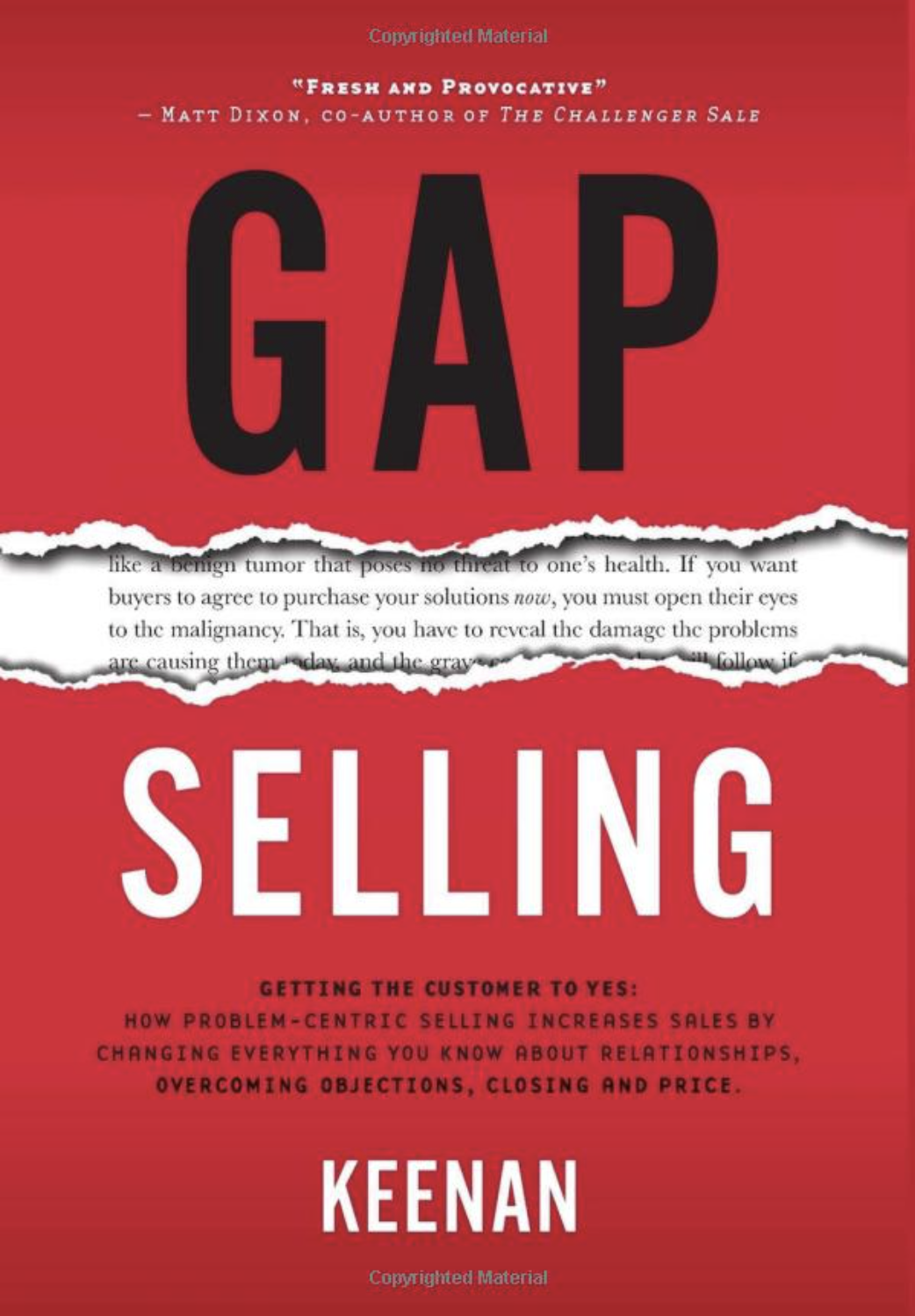
Gap Selling Training
Keenan also offers an online training program that provides video lessons (and accompanying activities) for a six-part curriculum with a special focus on the discovery process and identifying buyer problems. The training is offered for both individuals and teams, and ranges in cost from about $500 for individuals to nearly $15,000 for large enterprise teams.
Do you use gap selling in your sales strategies? What kinds of deals has it been most effective for? Are their prospects in your pipeline with whom you can try this sales methodology?
Gap Selling Worksheet for Sales Representatives
This worksheet is designed to help you prepare for a powerful “Gap Selling” conversation. By focusing on the customer’s current state, their desired future, and the painful gap between them, you can frame your solution as the essential bridge.
Part 1: Customer & Opportunity Overview
- Company Name:
- Key Contact(s) & Role(s):
- Date Prepared:
- Opportunity/Deal Name:
- Your Product/Service Being Considered:
Part 2: Uncovering the Current State (The “As Is”)
- What is the customer’s current situation regarding the area your product/service addresses? (Describe their processes, tools, methods, challenges.)
- Example: “They are manually tracking leads in a spreadsheet, leading to lost data.”
- What specific problems or pain points are they experiencing with their current state? (Think broadly: operational, financial, human, strategic.)
- Problem 1:
- Problem 2:
- Problem 3:
- What are the impacts of these problems? (Quantify where possible: time wasted, money lost, missed opportunities, employee morale, customer dissatisfaction.)
- Impact 1: (e.g., “Losing approximately 10 hours per week on manual data entry.”)
- Impact 2: (e.g., “Missing 5-7 qualified leads per month due to lack of follow-up.”)
- Impact 3: (e.g., “Sales reps are frustrated with outdated information, leading to low morale.”)
- What is the root cause of these problems? (Dig deeper than the symptom. Is it a process, a tool, a skill, a mindset?)
- Root Cause 1:
- Root Cause 2:
- What are the emotional consequences for the individual(s) you’re speaking with? (Frustration, stress, fear of missing targets, looking bad to management?)
- Emotional Consequence 1:
- Emotional Consequence 2:
Part 3: Defining the Desired State (The “To Be”)
- What does the customer want to achieve or look like in an ideal future, related to the problems identified? (Their goals, aspirations, vision of success.)
- Example: “They want a centralized system to manage all customer interactions efficiently.”
- What specific benefits would they gain by achieving this desired state? (Directly link to solving the problems and impacts from Part 2.)
- Benefit 1: (e.g., “Save 10+ hours per week, freeing up time for selling.”)
- Benefit 2: (e.g., “Increase qualified lead conversion by 15-20% per month.”)
- Benefit 3: (e.g., “Improve sales team satisfaction and retention.”)
- How would achieving this desired state impact their business overall? (Quantify where possible: revenue growth, cost reduction, market share increase, competitive advantage.)
- Business Impact 1:
- Business Impact 2:
- What are the emotional gains for the individual(s) when they reach this desired state? (Relief, recognition, confidence, peace of mind, career advancement?)
- Emotional Gain 1:
- Emotional Gain 2:
Part 4: Quantifying the Gap (The Cost of Inaction)
- Summarize the “Gap”: What is the clear difference between their current reality and their desired future?
- The Gap is:
- What is the cost of them staying in their current state (not bridging the gap)? (This is crucial for creating urgency. Think about the recurring financial, operational, and emotional costs.)
- Example: “At current rates, they are losing $X per month in missed opportunities and employee inefficiency.”
- Cost of Inaction 1:
- Cost of Inaction 2:
- Why is solving this gap urgent for them now? (Is there a deadline, a new initiative, competitor pressure?)
- Urgency Factor 1:
- Urgency Factor 2:
Part 5: Bridging the Gap with Your Solution
- How does your product/service directly address each problem identified in Part 2? (Connect features to solutions.)
- Problem 1: (e.g., Manual tracking) Your Solution: (e.g., Automated CRM with lead capture)
- Problem 2:
- Problem 3:
- How does your product/service enable them to achieve each desired benefit from Part 3? (Connect features to benefits.)
- Desired Benefit 1: (e.g., Save 10 hours) Your Feature: (e.g., Automated data sync)
- Desired Benefit 2:
- Desired Benefit 3:
- What specific proof or evidence can you offer to support your claims? (Case studies, testimonials, statistics, demos.)
- Proof Point 1:
- Proof Point 2:
Part 6: Anticipating Objections
- Based on the gap analysis, what potential objections might the customer raise? (Cost, timing, need, competition, internal resistance.)
- Objection 1:
- Objection 2:
- How will you reframe these objections back to the cost of their gap? (Don’t just answer; tie it back to their pain.)
- Response to Objection 1: (e.g., “I understand budget is a concern, but how does the cost of our solution compare to the $X you’re currently losing each month by not solving this problem?”)
- Response to Objection 2:
Part 7: Next Steps & Call to Action
- What is your proposed next step for the customer? (Specific, measurable, actionable.)
- Example: “Schedule a deeper dive demo focusing on automated lead nurturing.”
- What is the clear value proposition of this next step for the customer? (Why should they agree?)
- Example: “This demo will show you exactly how we’ll help you recapture those 5-7 lost leads per month, directly impacting your Q3 revenue targets.”
This worksheet provides a structured approach to deeply understand your customer’s situation and position your solution effectively, moving beyond mere product features to true value creation.
How Yesware’s Sales Engagement Platform Enables Powerful Gap Selling
Effective Gap Selling demands deep customer understanding, meticulous preparation, and focused, personalized engagement. This is where Yesware’s sales engagement platform becomes an invaluable asset, directly enabling sales reps to master the Gap Selling methodology through its Prospector and robust email automation features.
The first step in Gap Selling is thoroughly understanding the customer’s “Current State.” Yesware’s Prospector tool streamlines this critical pre-call planning:

- Pre-Call Intelligence: Prospector allows sales reps to quickly find accurate contact information, company details, and relevant insights before they even initiate contact. This includes understanding the company’s industry, size, recent news, and sometimes even their current tech stack or public challenges.
- Targeted Outreach: With this intelligence, reps can craft initial outreach that is already more relevant than generic messages. This increases response rates and sets the stage for a more productive first conversation.
- Foundation for Deeper Questions: Armed with context from Prospector, reps can enter discovery calls with educated hypotheses about potential “Current State” problems. Instead of asking basic informational questions, they can immediately pivot to more insightful, probing questions that uncover deeper pain points and their impacts, accelerating the Gap Selling process. This efficiency means more time spent on understanding the nuances of the customer’s business, not just surface-level facts.
The essence of Gap Selling is personalized, problem-centric engagement, which requires time and focus. Yesware’s email automation empowers reps by handling repetitive tasks:
- Automated Nurturing & Follow-Up: Sales email sequences allow reps to automate initial touches, follow-ups, and nurturing campaigns. Instead of manually sending routine emails, reps can set up personalized sequences that run in the background.

- Time for Deep Discovery: By automating routine outreach, Yesware frees up significant time in a sales rep’s day. This reclaimed time is precisely what’s needed to:
- Conduct thorough Gap Analysis: Reps can spend more time researching individual prospects, analyzing their industry trends, and truly understanding the potential “gaps” for each account.
- Prepare Insightful Questions: More time means more thoughtful preparation of the probing questions essential for uncovering current state challenges and desired future outcomes.
- Engage Personally: The time saved on administrative tasks can be reinvested in live conversations, personalized video messages, or tailored presentations that build stronger rapport and allow for the in-depth dialogue Gap Selling requires.
- Qualifying Through Automation: Automated emails can also be designed to subtly gather initial qualifying information or identify pain points. For example, a sequence might ask about current challenges or link to content that, based on engagement, reveals a prospect’s interest in a specific problem area, guiding the rep on where to focus their Gap Selling efforts.
When Yesware’s Prospector and email automation work together, they create a powerful ecosystem for Gap Selling:
- Prospector provides the initial intelligence, allowing reps to anticipate and research potential “Current State” problems.
- Email Automation handles the heavy lifting of initial outreach and follow-up, ensuring consistent communication while saving the rep valuable time.
- The rep’s focus can then shift from mere activity to high-value strategic conversations. They arrive at discovery calls better informed, with more time to listen, probe, and truly understand the prospect’s unique “gap.”
This symbiotic relationship enables sales reps to move beyond transactional selling. They can enter conversations not just with a product to sell, but with a clear understanding of the customer’s pain, a vision of their desired future, and the ability to articulate exactly how Yesware’s platform bridges that critical gap, leading to more meaningful interactions and ultimately, more closed deals.
Mastering Gap Selling for Sustainable Sales Growth
In a competitive sales landscape, merely presenting product features is no longer enough. The modern buyer is informed and seeks solutions to their specific problems. This is precisely why Gap Selling is not just another sales technique, but a fundamental shift towards a more effective, customer-centric approach.
By consistently applying the principles of Gap Selling – diligently uncovering the prospect’s “Current State,” helping them vividly define their “Desired State,” and rigorously quantifying the painful “Gap” between the two – sales professionals transform themselves from product peddlers into indispensable problem-solvers. You stop selling products and start selling solutions to real, quantifiable business challenges.
Mastering Gap Selling leads to:
- Higher Conversion Rates: By aligning your solution directly with a prospect’s urgent, identified pain, you create a compelling and undeniable value proposition.
- Increased Deal Size: When the full impact of the “gap” is understood, the perceived value of your solution rises, justifying a higher investment.
- Stronger Customer Relationships: A problem-centric approach builds trust and positions you as a strategic advisor, not just a vendor.
- Shorter Sales Cycles: Clarity around the problem and its solution accelerates the decision-making process.
- Sustainable Sales Growth: Deals won through Gap Selling are often more robust and less prone to churn, as they are based on solving core business issues.
Embrace Gap Selling not just as a methodology, but as a sales mindset. It’s about truly understanding your customer’s world, their aspirations, and the pain of their current reality. By doing so, you’ll not only close more deals but also build lasting partnerships that drive sustainable success for both your customers and your organization.
Platforms like Yesware, with tools such as Prospector and Email Automation, further empower sales teams to adopt and scale Gap Selling. Sign up to use Yesware for free!
Frequently Asked Questions (FAQs) About Gap Selling
1. What exactly is “Gap Selling”?
Gap Selling is a problem-centric sales methodology that focuses on identifying the “gap” between a prospect’s undesirable “Current State” and their ideal “Desired State.” Instead of selling a product, the salesperson works to uncover, quantify, and make the prospect feel the pain of this gap, then positions their solution as the bridge to close it.
2. Who developed the Gap Selling methodology?
Gap Selling was developed by Keenan, a highly respected sales expert and author of the book “Gap Selling: Getting Customers to Commit.”
3. How does Gap Selling differ from traditional product-focused selling?
Traditional selling often starts by presenting product features and benefits, hoping they resonate. Gap Selling, in contrast, starts with the customer’s problems and their current reality. It prioritizes deep discovery to understand their pain points and desired outcomes before introducing the solution, making the sale about solving their specific challenges rather than pushing a product.
4. Why is it so important to “quantify the gap”?
Quantifying the gap means putting a tangible value (e.g., financial cost, time wasted, missed opportunities, emotional impact) on the problems the prospect is experiencing. This is crucial because it creates urgency and demonstrates the true cost of inaction. When prospects understand what their current state is actually costing them, they are far more motivated to invest in a solution.
5. What are the main benefits of adopting a Gap Selling approach?
Key benefits include:
- Increased Conversion Rates: Solutions directly address pain.
- Higher Average Deal Sizes: Value is clearly demonstrated.
- Stronger Customer Relationships: You become a trusted advisor.
- Reduced Sales Cycles: Clear problems lead to clear decisions.
- More Sustainable Wins: Deals are based on genuine need, leading to better retention.
6. Can Gap Selling be applied to any industry or product?
Yes. While the specific problems and solutions will vary, the core principles of Gap Selling – understanding a customer’s “Current State,” defining their “Desired State,” and identifying the “Gap” – are universally applicable across B2B and B2C sales, regardless of the product or service being offered.
7. What’s the most common mistake sales reps make when trying to use Gap Selling?
The most common mistake is jumping into product discussions too early, before adequately completing the discovery phase. This undermines the entire methodology, as the prospect hasn’t yet fully articulated or felt the pain of their “gap,” making any solution feel premature or irrelevant. Resist the urge to present your solution until the gap is clear and compelling.
This guide was updated on June 20, 2025.
Get sales tips and strategies delivered straight to your inbox.
Yesware will help you generate more sales right from your inbox. Try our Outlook add-on or Gmail Chrome extension for free, forever!
Related Articles
Casey O'Connor
Casey O'Connor
Casey O'Connor
Sales, deal management, and communication tips for your inbox

